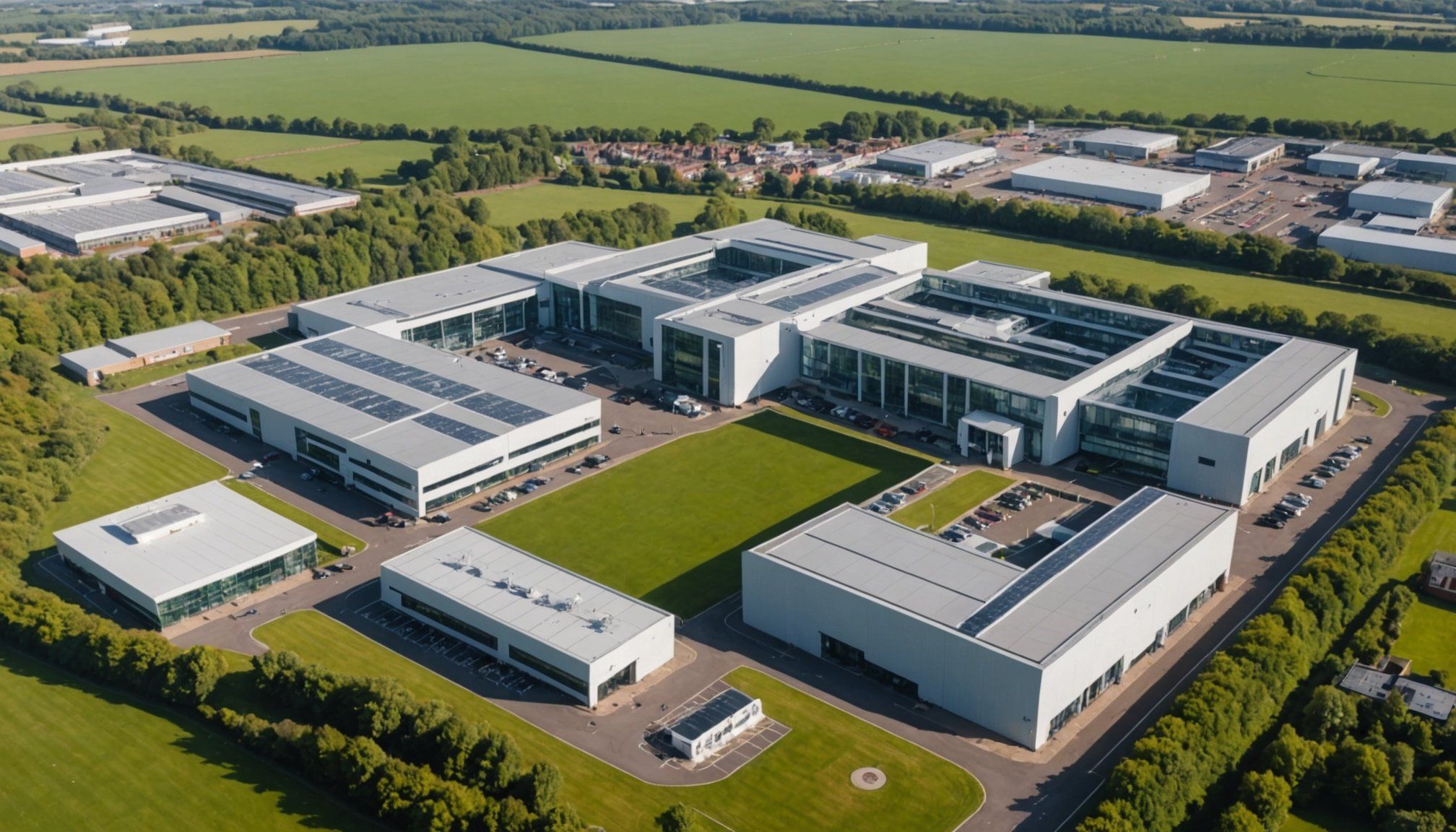Unlocking Profit: The Economic Advantages of Investing in Properties Adjacent to UK Science Parks
The Rise of Science Parks: A Hub for Innovation
Science parks have become pivotal in the UK’s economic landscape, serving as vibrant hubs for innovation, research, and technological advancement. These parks are not just isolated clusters of scientific activity but are increasingly integrated into the broader economic and social fabric of their surrounding areas. Investing in properties adjacent to these science parks can offer a myriad of economic advantages, making them an attractive proposition for both local and international investors.
Proximity to World-Class Research Facilities
One of the most significant advantages of investing in properties near UK science parks is the proximity to world-class research facilities. These parks are often affiliated with renowned universities and research institutions, such as the University of Cambridge, which is home to the Cambridge Science Park. This proximity allows businesses to tap into a pool of highly skilled talent, collaborate with leading researchers, and benefit from the latest technological advancements.
Also read : Top Marketing Tactics for Successfully Promoting Rental Properties in Competitive UK Markets
Example: Cambridge Science Park
The Cambridge Science Park, one of the oldest and most successful science parks in the UK, is a prime example. With over 130 companies, including major players like Philips and Citrix, this park has become a hotbed for innovation in the technology and life sciences sectors. The park’s close relationship with the University of Cambridge ensures a constant flow of fresh ideas and skilled graduates, making it an ideal location for businesses looking to stay at the forefront of their fields.
Access to a Skilled Workforce
Science parks are magnets for highly skilled professionals, including scientists, engineers, and technologists. Investing in properties nearby provides businesses with easy access to this talented workforce, which is crucial for driving innovation and growth.
In parallel : Crafting Robust Emergency Response Strategies for High-Density Residential Complexes
Benefits of a Skilled Workforce
- Innovation: A skilled workforce is essential for driving innovation. With access to top talent, businesses can develop new products and services that meet the evolving needs of the market.
- Competitive Edge: Companies located near science parks can attract and retain the best talent, giving them a competitive edge in their respective industries.
- Knowledge Transfer: The close proximity to universities and research institutions facilitates knowledge transfer, enabling businesses to stay updated with the latest research and technological developments.
Government Support and Incentives
The UK government has been proactive in supporting the development of science parks through various incentives and initiatives. These include tax breaks, grants, and other forms of financial support aimed at encouraging inward investment and fostering economic growth.
Government Initiatives
- Tax Incentives: The UK government offers tax incentives for businesses operating in science parks, such as reduced corporation tax rates and research and development (R&D) tax credits.
- Grants and Funding: Various grants and funding programs are available to support start-ups and established businesses in science parks, helping them to scale up their operations and invest in new technologies.
- Public Services: Science parks often benefit from enhanced public services, including improved transportation links and state-of-the-art infrastructure, which further enhance their attractiveness to investors.
Economic Growth and Development
Investing in properties adjacent to science parks can contribute significantly to local economic growth and development. These parks act as catalysts for economic activity, generating jobs, stimulating local businesses, and attracting new investment.
Economic Impact
- Job Creation: Science parks create a significant number of jobs, both directly within the park and indirectly through the support services and local businesses that serve them.
- Local Businesses: The presence of science parks boosts local businesses, including cafes, restaurants, and other service providers that cater to the needs of the park’s employees and visitors.
- Inward Investment: Science parks are a major draw for inward investment, attracting companies from around the world who are looking to tap into the UK’s vibrant innovation ecosystem.
Long-Term Investment Potential
Investing in properties near science parks is a long-term strategy that can yield substantial returns. These areas tend to appreciate in value over time due to their strategic location and the ongoing demand for space from innovative businesses.
Long-Term Benefits
- Appreciation in Value: Properties located near science parks tend to increase in value as the park grows and attracts more businesses and investment.
- Rental Income: Investors can generate significant rental income from businesses and researchers looking for space within or near the science park.
- Diversification: Investing in properties adjacent to science parks provides a diversified investment portfolio, reducing reliance on any single market or sector.
Case Study: Bruntwood Scitech
Bruntwood Scitech is a leading property provider specializing in science and technology facilities across the UK. Their portfolio includes several science parks and innovation districts, such as the Manchester Science Park and the Leeds Innovation District.
Bruntwood Scitech’s Approach
- World-Class Facilities: Bruntwood Scitech offers world-class facilities designed to meet the specific needs of science and technology businesses, including state-of-the-art laboratories and office spaces.
- Support Services: The company provides a range of support services, including business mentoring, networking events, and access to funding opportunities, to help businesses grow and thrive.
- Innovation Ecosystem: By creating vibrant innovation ecosystems, Bruntwood Scitech fosters collaboration between businesses, universities, and research institutions, driving innovation and economic growth.
Practical Insights and Actionable Advice
For those considering investing in properties adjacent to UK science parks, here are some practical insights and actionable advice:
Due Diligence
- Research the Park: Understand the specific focus of the science park (e.g., life sciences, technology sectors) and the types of businesses it attracts.
- Local Market Analysis: Conduct a thorough analysis of the local market to understand demand, supply, and potential for growth.
- Infrastructure and Amenities: Evaluate the quality of infrastructure and amenities available in the area, including transportation links, public services, and support facilities.
Diversification
- Diversify Your Portfolio: Spread your investment across different types of properties and locations to minimize risk.
- Long-Term Perspective: Adopt a long-term perspective, as investing in properties near science parks is a strategy that yields returns over several years.
Collaboration
- Engage with Local Stakeholders: Build relationships with local universities, research institutions, and businesses to understand their needs and opportunities for collaboration.
- Network: Participate in networking events and join local business groups to stay informed about developments and opportunities in the area.
Investing in properties adjacent to UK science parks offers a compelling opportunity for economic growth and development. With their proximity to world-class research facilities, access to a skilled workforce, government support, and long-term investment potential, these areas are poised to drive innovation and prosperity.
Key Takeaways
- Innovation Hubs: Science parks are innovation hubs that attract top talent and businesses.
- Government Support: The UK government provides various incentives to support businesses in science parks.
- Long-Term Growth: Investing in these areas is a long-term strategy with significant potential for returns.
- Diversification: Diversify your investment portfolio to minimize risk and maximize returns.
By understanding the economic advantages and taking a strategic approach, investors can unlock the full potential of properties adjacent to UK science parks, contributing to a vibrant and innovative economy.
Detailed Bullet Point List: Benefits of Investing in Properties Adjacent to UK Science Parks
-
Proximity to World-Class Research Facilities:
-
Access to cutting-edge research and technology
-
Collaboration opportunities with leading researchers
-
Talent pool from affiliated universities
-
Access to a Skilled Workforce:
-
Attraction and retention of top talent
-
Driving innovation and competitive edge
-
Knowledge transfer from universities and research institutions
-
Government Support and Incentives:
-
Tax incentives and R&D tax credits
-
Grants and funding programs
-
Enhanced public services and infrastructure
-
Economic Growth and Development:
-
Job creation and local economic stimulation
-
Attraction of inward investment
-
Boost to local businesses and services
-
Long-Term Investment Potential:
-
Appreciation in property value
-
Significant rental income
-
Diversified investment portfolio
Comprehensive Table: Comparison of Key Science Parks in the UK
| Science Park | Location | Key Focus | Number of Companies | Notable Tenants | University Affiliation |
|---|---|---|---|---|---|
| Cambridge Science Park | Cambridge | Technology, Life Sciences | 130+ | Philips, Citrix | University of Cambridge |
| Manchester Science Park | Manchester | Technology, Health Sciences | 150+ | IBM, Siemens | University of Manchester |
| Leeds Innovation District | Leeds | Technology, Creative Industries | 100+ | Sky, NHS Digital | University of Leeds |
| Oxford Science Park | Oxford | Life Sciences, Technology | 70+ | Oxford Instruments, Sharp | University of Oxford |
| Edinburgh Technopole | Edinburgh | Technology, Life Sciences | 80+ | IBM, Oracle | University of Edinburgh |
Quotes from Industry Experts
- “Science parks are the lifeblood of innovation in the UK. They provide a unique ecosystem where businesses can thrive, collaborate with top researchers, and access cutting-edge technology.” – David Hardman, CEO of Bruntwood Scitech
- “The government’s support for science parks through tax incentives and grants has been instrumental in attracting inward investment and driving economic growth.” – Dr. Sarah Jones, Director of Research at the University of Cambridge
- “Investing in properties near science parks is a long-term strategy that offers significant returns. It’s about being part of a vibrant innovation ecosystem that drives growth and prosperity.” – Mark Power, Investment Analyst at JLL
By leveraging these insights and understanding the comprehensive benefits, investors can make informed decisions about investing in properties adjacent to UK science parks, unlocking a path to sustained economic growth and innovation.











